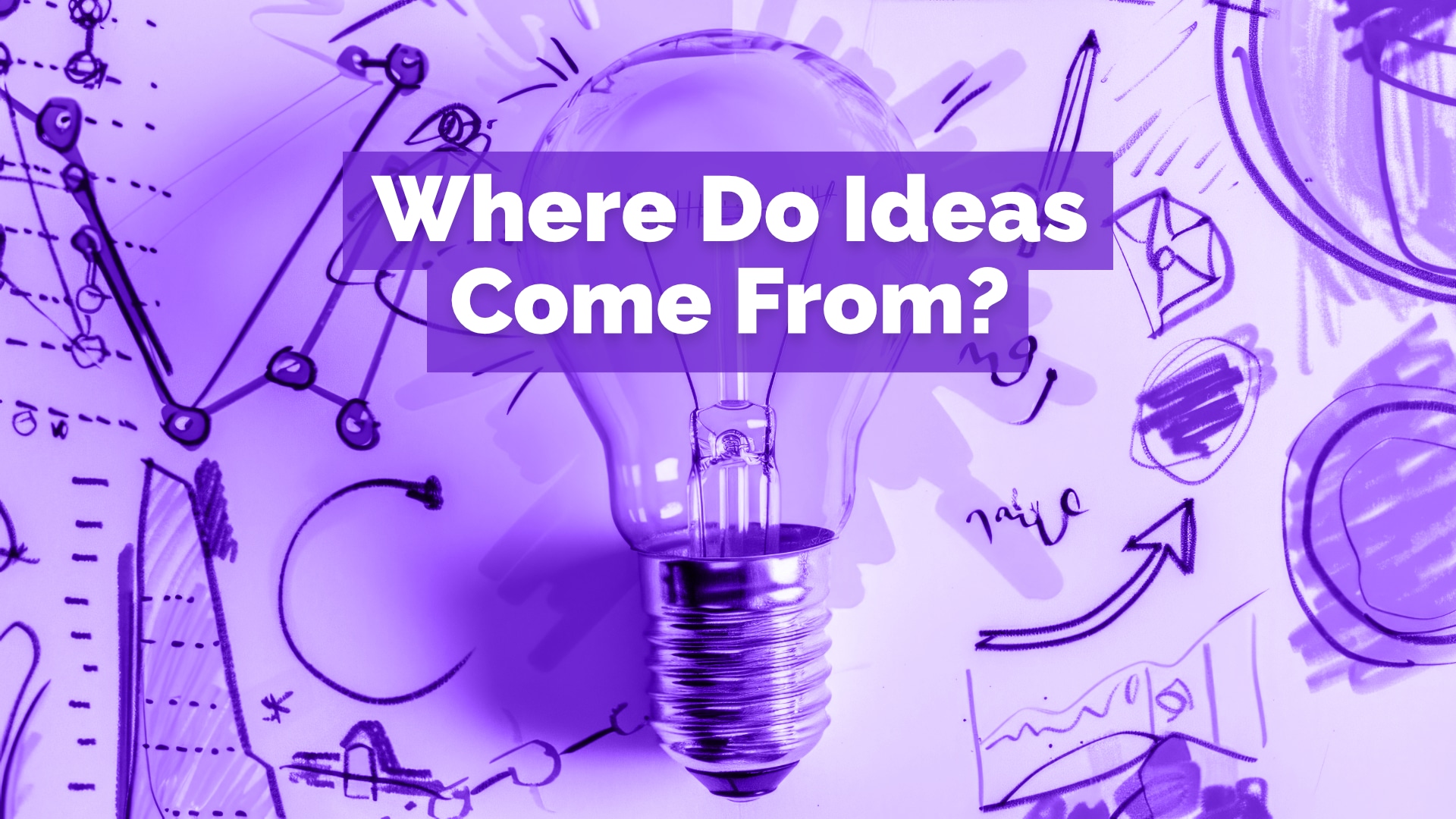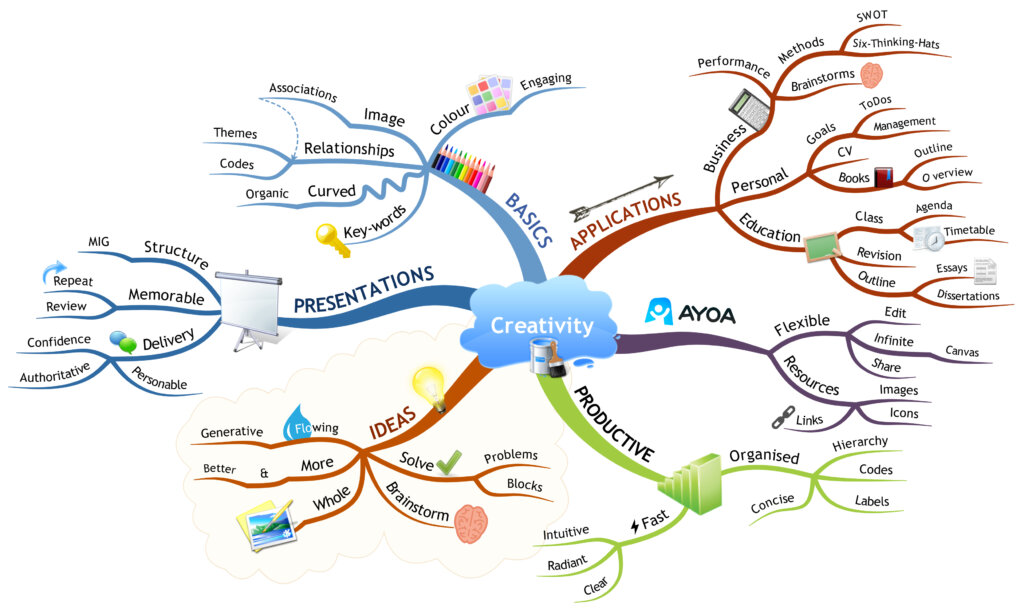January 4, 2025
Where Do Ideas Come From?

Your brain is made up of billions of neurons that, during the process of thinking, go firing across your brain in search of new connections. It’s effectively an association machine in which every bit of information, every idea, memory or emotion sparks hundreds and even thousands of associations which can be seen to ‘radiate’ outwards. What’s more, each of these associations also has its own unlimited array of neural connections.
Steven Johnson, best-selling author and one of the world’s most innovative popular thinkers, explains that a new idea is simply a ‘network’ of neurons that’s never before been formed. It’s what comes about when neurons explore the multitude of adjacent possible connections they can make in your mind.
To create consists of making new combinations of associative elements which are useful…the most fertile will often be those formed of elements drawn from domains which are far apart.
Henri Poincare, French mathematician and theoretical physicist
Contrary to standard thought, good ideas hardly ever occur as ‘eureka’ moments or ‘flash’ breakthroughs. In reality, they may take months or even years to culminate and evolve. And Steven Johnson’s concept of the ‘liquid network’ demonstrates that, rather than being something entirely brand new, an idea is the product of a combination of your existing knowledge or ideas, and those of other people, colliding and fusing together in a new way. It’s only when the neural connections in your brain reach a state of accessibility or ‘liquidity’ that the idea can actually materialise.

This theory echoes that of the philosopher and physician John Locke who maintained that ideas are derived from 1) sensation – observation of the external world and 2) reflection – our own mental operations and ruminations on our observations. And as Tony Proctor, author of Creative Problem Solving for Managers emphasises, ideas are not random, disconnected entities. They can be consciously related to each other through idea processing which “takes individual ideas and manipulates, synthesises and associates them with one another until they form a larger contextual pattern that we can consciously relate to some human concern.”
Creativity is just connecting things. When you ask a creative person how they did something, they may feel a little guilty because they didn’t really do it, they just saw something. It seemed obvious to them after a while. That’s because they were able to connect experiences they’ve had and synthesize new things… A lot of people in our industry haven’t had very diverse experiences. They don’t have enough dots to connect, and they end up with very linear solutions, without a broad perspective on the problem.
Steve Jobs, Co-founder and CEO of Apple Inc
With this understanding, it becomes possible to create an external environment that mimics the interactive way in which the brain connects ideas. By bringing together diverse thoughts and people with different backgrounds and interests, snippets of knowledge and assorted ideas can merge to create entirely new configurations. Ideas that are only part ready can connect into something larger and far more exceptional.
Mind Mapping is essentially a technique that emulates, supports and accelerates this ‘dot connecting’ process, allowing us to bring new ideas into being in the most liberating and cohesive way. In a Mind Map, information is structured and recorded in a graphic format that mirrors the expansive behaviour of the brain when it creates connections. This allows us to clearly ‘see’ how our associations can flare into novel and original ideas or solutions. The concept of association is widely believed to be at the heart of any creative act. Popularised by Arthur Koestler under the term ‘bisociation’, it suggests that linking one area to another gives rise to novel associations and that such associations form the bedrock of creative ideas. On these grounds, it clearly validates the use of many divergent thinking techniques such as Mind Mapping.

Whether we’re working on paper or on a computer, alone or in teams, our thoughts and ideas can be captured, co-ordinated and strengthened with great ease and resourcefulness in a Mind Map. Naturally, this makes it an exceptionally powerful tool for solving complex problems, broadening horizons and improving day-to-day decision making.
Idea Generation
Idea creation is a magical dance of both intentional and unconscious neural association. Good idea generation techniques have been shown to increase creativity by as much as 50 percent. The mind map technique has proved to be particularly effective as users generate 32% more usable ideas using structured brainstorming techniques when compared to the conventional ones. Companies that use structured idea generation experience a 70% jump in innovation rates.
Creative blocks often result from cognitive obsession – obsessing over the same things. Surviving such obstacles takes specialized skills. Mind mapping combined with freewriting, for example, can increase ideas by 40%. Researchers have demonstrated that adjusting your surroundings doubles the productivity of your creativity, and structured group brainstorming produces twice as many useful ideas as spontaneous brainstorming.
Creative Flow
Creative flow, or simply “being in the zone,” is a perfect state of awareness where creativity is thriving. Studies show that flow states make people five times more productive than average. The mind map exercise helps achieve flow because it aims to frame thought in an analogous manner to what happens naturally in the brain. According to research, mind mappers go 30% deeper into the creative process than linear note-taking participants.
In flow, visualization of ideas comes easier and faster. Researchers discovered that, when visual thinking is combined with creativity, problem-solving can be 55% more efficient. Flow state practitioners consistently report more satisfaction with their work and create more original solutions to difficult challenges.
Mind Map Technique
The mind map technique translates abstract thoughts into images. This has been shown to increase information retention by as much as 32% over traditional notes. By coalescing concepts in luminous lines around a central idea, mind mapping activates both sides of the brain, enabling more ideas and more insight.
Studies show that imagining an idea with the mind map method leads to 40% increased recall and retention of difficult concepts. Mind mapping helps companies finish their projects 25% faster and radically improves team performance. The technique works because it matches up with the natural way people think, which is why it is ideal for both one-on-one and group thought exercises.
Idea Visualization
Concept mapping creates a powerful model for creativity. Researchers have reported that visual thinking strategies can increase problem-solving abilities by as much as 63 per cent. In tandem with process driven ideation, visualization techniques help teams to detect patterns and connections that would otherwise be invisible.
The fusion of mind mapping and idea visualization has transformed creativity across industries. Teams who use visual brainstorming report 70% more useful ideas than their conventional colleagues. Additionally, the synthesis of inspiration and diagramming results in more creative solutions and better understanding of complex data.
Combining these approaches – inspiration, flow, mind mapping, visualization – provides a solid foundation for creativity. Whether you’re thinking through tough problems, creating products or exploring new avenues, this combined approach provides a tested formula for greater innovation and productivity.
Ayoa is a powerful tool that helps transform abstract thoughts into structured, actionable ideas. By combining mind mapping with task management, Ayoa enables users to visually organize their creative processes, making it easier to generate, develop, and refine ideas. Whether you’re brainstorming solo or collaborating with a team, Ayoa’s intuitive interface ensures that no idea is lost, helping you turn inspiration into innovation effortlessly.
